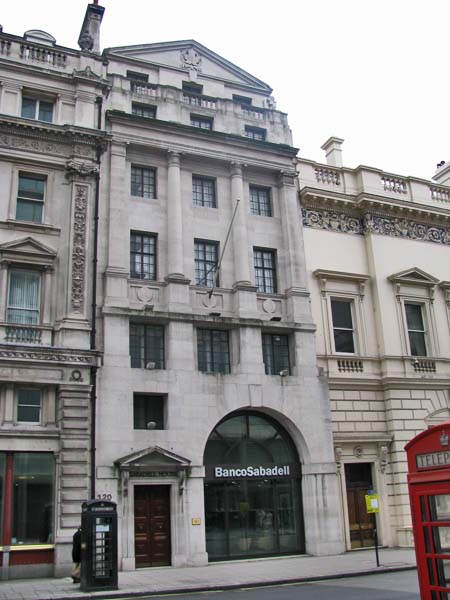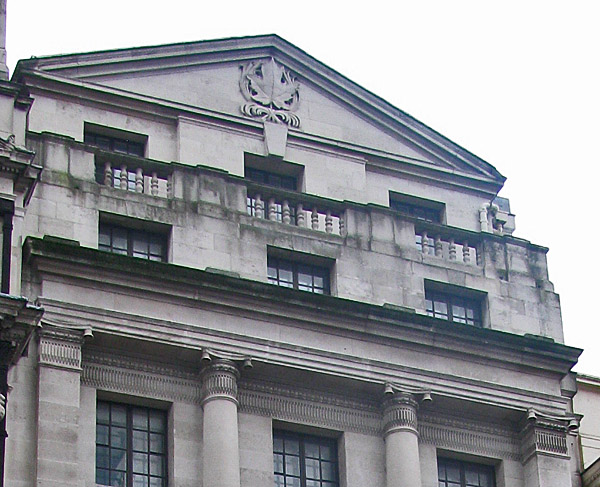Banco
Sabadell, 120 Pall Mall,
London

Architect
|
Edwin Lutyens
|
Date
Built
|
1931
|
Location
|
120 Pall Mall,
London
|
Description
|
The name above the door at 120 Pall Mall is
Sabadell House but, in relative terms, the
Spanish Bank, after whom the building is
named, is a recent occupant. The maple
leaf at the top of the building is the clue to
the building's origin. It was, infact,
designed by Edwin Lutyens for a Canadian
company called Crane Limited and its British
subsidiary Crane-Bennett. The basement,
ground and first floors were designed as
show-rooms, with a visitors' lounge in the
mezzanine at the back. The other floors were
to be let separately as offices. The
company was in the business of heating and
sanitary engineering. Crane Limited
didn't occupy the building for very
long. The "British History Online"
website says that they left in 1932 after
which the building became home to the Holland
America Line (London) Limited.
The "British History Online" website describes
Lutyens building as, " ... no mere
clothing of structural steel with Portland
stone—it is a masonry construction, with
depth as well as height and width, the
composition is bold and full of subtle
relationships, and the details are
exquisitely precise. There are two lofty
stages, the lower forming a powerful base,
dominated by the cavernous unmoulded arch
of the show-room window, asymmetrically
placed and having the pedimented doorway
and a square mezzanine window on its left,
and a range of three deeply recessed
windows above."

Two square and two round columns feature
ornamented capitals and the decoration is
continued as a band across the wall faces. The
capitals also have small stone bells, a
characteristic of Lutyens so-called 'Delhi'
order. This is a feature that he used in
his interior design of the Midland's Bank in
Manchester, see below.
I have seen it suggested that his use of stone
bells is founded on an Indian legend that says
that dynasties fall to the sound of ringing
bells, so the best way to ensure that a
dynasty, like the British Empire, would
survive was to create stone bells that cannot
ring. I have also seen it suggested that
this is pure mythology. Interestingly
Lutyens' coat of arms has at its centre a
column capital with bells.
|
|

